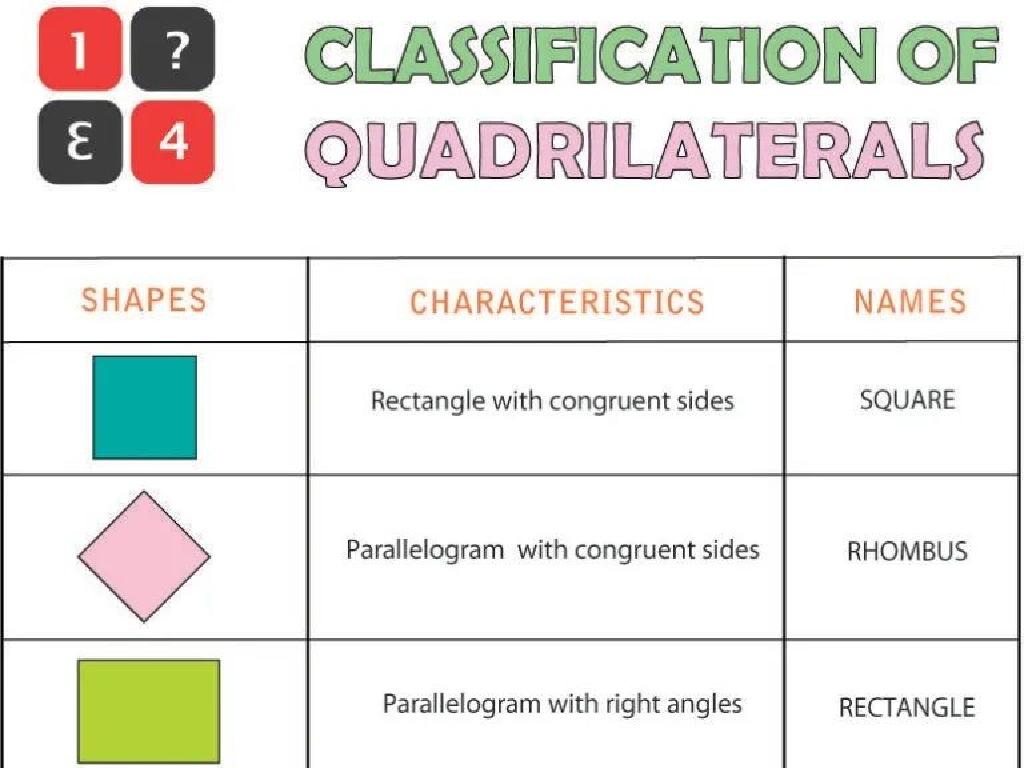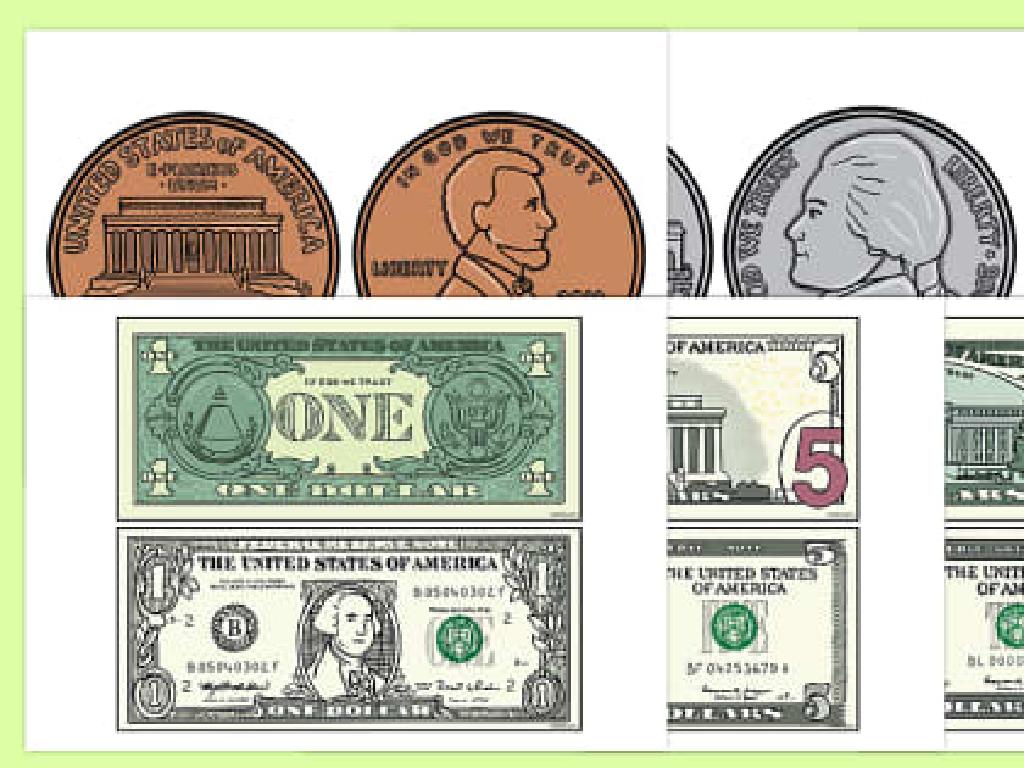Graph And Compare Fractions On Number Lines
Subject: Math
Grade: Fifth grade
Topic: Compare Fractions
Please LOG IN to download the presentation. Access is available to registered users only.
View More Content
Graphing and Comparing Fractions
– Recap: What are fractions?
– Fractions represent parts of a whole
– Graphing fractions on a number line
– Place fractions correctly on a line
– Comparing fractions: why it matters
– Helps in making fair decisions & understanding math problems
– Practice activity: Let’s compare!
|
Begin with a quick review of fractions, ensuring students recall that fractions represent parts of a whole. Emphasize the numerator and denominator. Move on to graphing fractions on a number line, demonstrating how to place them correctly according to their value. Discuss the importance of comparing fractions in real-life scenarios, such as dividing a pizza among friends or measuring ingredients for a recipe. Conclude with a hands-on activity where students graph and compare fractions on a number line, solidifying their understanding through practice. Provide several examples of fractions to compare and encourage students to explain their reasoning.
Understanding Number Lines
– Number line definition
– A straight line with equally spaced numbers
– Visual tool for ordering
– Comparing fractions on it
– Place fractions on the line to see which is larger
– Graphing fractions made easy
– Mark fractions as points and compare positions
|
Begin by explaining what a number line is and how it is set up with numbers at equal intervals. Emphasize that it’s a powerful visual tool for understanding the order of numbers, which is especially helpful for visual learners. Then, transition to how number lines can be used specifically for comparing and graphing fractions. Show that by placing fractions on the number line, students can easily see which fractions are larger or smaller. Encourage students to practice by graphing different fractions and visually comparing their positions on the number line. This will help solidify their understanding of the relative size of fractions.
Placing Fractions on a Number Line
– Fractions as parts of a whole
– Dividing number lines into equal parts
– Imagine cutting a cake into equal slices; each slice is a fraction of the cake.
– The role of the denominator
– If a fraction has a denominator of 4, we divide the line into 4 equal parts.
– Placing fractions correctly
– Each part on the line represents a fraction; place them based on the denominator.
|
This slide introduces the concept of representing fractions on a number line, which is a visual way for students to understand fractions as parts of a whole. Emphasize that the denominator of a fraction determines how many equal parts the whole is divided into. For example, if the denominator is 4, the number line should be divided into 4 equal parts. This will help students visualize and compare the size of different fractions. Encourage students to practice by drawing their own number lines and placing fractions on them, ensuring they understand that each point on the line corresponds to a fraction with the same denominator.
Comparing Fractions on Number Lines
– Position determines size
– Closer to 0 is smaller
– Same numerators, compare denominators
– If fractions share the same top number, look at the bottom number to decide which is larger
– Smaller denominator means larger fraction
– For example, 1/3 is larger than 1/4 because 3 is less than 4
|
When teaching students to compare fractions, using a number line is a visual and effective method. It helps them see the relative size of fractions. The fraction that is positioned closer to 0 on the number line is the smaller fraction. When fractions have the same numerator, the size of the fractions is inversely related to the size of the denominators; the smaller the denominator, the larger the fraction. This is because the whole is divided into fewer, but larger, parts. Use examples like 1/2 and 1/3 on a number line to illustrate these concepts. Encourage students to practice by placing various fractions on a number line and comparing them to reinforce their understanding.
Understanding Equivalent Fractions
– What are equivalent fractions?
– Fractions that have the same value, but look different
– Equivalent fractions on a number line
– If fractions are equivalent, they’ll be at the same point on a number line
– Example: 1/2 equals 2/4
– Both fractions represent the same part of a whole
– Practice finding equivalents
|
This slide introduces the concept of equivalent fractions, which are different fractions that represent the same part of a whole. Emphasize that while these fractions may look different, they are just different ways of expressing the same value. Use a number line as a visual aid to show that equivalent fractions align at the same point. For example, show that 1/2 and 2/4 occupy the same position on a number line. Encourage students to practice finding equivalent fractions by identifying other fractions that represent the same value and verifying their equivalence on a number line. This will help solidify their understanding of the concept and prepare them for comparing fractions.
Let’s Practice: Graphing Fractions on a Number Line
– Graph fractions on a number line
– Compare fractions visually
– Consider the whole’s size
– Is the whole divided into halves, thirds, fourths?
– Reflect on the number of parts
– Are there more or fewer pieces?
|
This activity is designed to help students understand how to graph and compare fractions using a number line. Students will practice placing fractions on a number line and use this visual tool to compare the sizes of different fractions. Remind them to consider the size of the whole, as a fraction represents a part of a whole, and the number of equal parts the whole is divided into. For example, 1/2 is larger than 1/4 because the whole is divided into fewer parts. Provide students with a variety of fractions to graph and compare, such as 1/2 vs. 3/4 or 2/3 vs. 2/5. Encourage students to discuss their observations with a partner. Possible activities include: graphing given fractions, ordering fractions from smallest to largest, and finding equivalent fractions on the number line.
Class Activity: Fraction Number Line Art
– Create a personal fraction number line
– Pair up to compare fractions
– Discuss fraction sizes and equivalency
– Which are larger, smaller, or the same?
– Reflect on the activity
– Share what you learned about fractions
|
In this engaging class activity, students will apply their knowledge of fractions and number lines by creating their own number line art with fractions of their choice. Once completed, they will partner up with a classmate to compare their fractions, fostering peer learning and discussion. Encourage them to use terms like ‘greater than’, ‘less than’, and ‘equal to’ when comparing. This activity will help solidify their understanding of fraction sizes and equivalency. After the discussion, have students reflect on what they learned and share their insights with the class. Possible variations of the activity could include using different sets of fractions, comparing more than two number lines, or incorporating mixed numbers.
Conclusion & Reflection: Fraction Comparison
– Excellent work on fractions!
– Why compare on a number line?
– It helps visualize size differences.
– Real-life benefits of this skill
– Useful in cooking, budgeting, and time management.
– Reflect on today’s learning
|
Congratulations to the class for mastering the skill of graphing and comparing fractions on a number line. Understanding the concept of fractions and their comparison is crucial as it aids in visualizing and grasping the concept of part-whole relationships. This skill is not only academically important but also practical in everyday life scenarios such as dividing a pizza among friends (cooking), allocating pocket money (budgeting), or planning daily activities (time management). Encourage students to think of other areas where they can apply this knowledge and to reflect on how their understanding of fractions has improved after today’s lesson.





